Burning the Midnight Oil for Living Energy Independence
 We are in the Lame Duck Period. We have real unemployment rates of approximately 14% (counting headline unemployment, marginally attached, and involuntary unemployment as roughly 50% employed, 50% unemployed), and if the economy still sucks this bad in November in two years times, all manner of absurdly idiotic reactions could be elicited from an angry electorate by skillful corporate marketers.
We are in the Lame Duck Period. We have real unemployment rates of approximately 14% (counting headline unemployment, marginally attached, and involuntary unemployment as roughly 50% employed, 50% unemployed), and if the economy still sucks this bad in November in two years times, all manner of absurdly idiotic reactions could be elicited from an angry electorate by skillful corporate marketers.And if the the Republicans are willing to sabotage the security on loose nuclear bomb making material for political gain, surely they will sabotage the economy, as they have been doing.
And with transportation from the Recovery Act creating 630,000 direct and indirect jobs ~ a larger share of jobs than share of funding ... attacking transport funding is a critical step in sabotaging the economy.
So, an idea on what can be done about it.
_________________________________________
The Highway Trust Fund needs money
 The central problem facing transport is "revenue" or, to use a five letter word, taxes. We have a Federal gas tax that has been frozen at under $0.19 over the last decade, with no adjustment for inflation, while on the other hand, the Federal Highway Trust Fund is facing escalating demands on its funding.
The central problem facing transport is "revenue" or, to use a five letter word, taxes. We have a Federal gas tax that has been frozen at under $0.19 over the last decade, with no adjustment for inflation, while on the other hand, the Federal Highway Trust Fund is facing escalating demands on its funding.The problem is more than just the lack of an inflation adjustment, but its still fairly straightforward. When the Highway Trust Fund was launched, it was to be directed to Interstate, US, State, County and Township Highways ~ in other words, to most roads used in suburban and rural areas, but excluding most roads used in urban areas.
Of course, when it was launched, we had a dominant share of motorists doing most of their driving on unfunded city streets. So there was a tremendous cross-subsidy provided from urban street driving miles to rural and suburban roadworks.
And as we are all aware, this cross-subsidy is one of the things that promoted the growth of new rings of suburbs, and then outer suburbs.
So the share of the driving on subsidized roads has been increasing while the share of driving on subsidizing roads is shrinking. And the growth in use of the subsidized roads implies a delayed-fuse financial time bomb in terms of a growing maintenance cost over time.
And while the cost of maintaining our road system will be growing over time, a fixed dollar value Federal gas tax implies a shrinking amount of resources that can be devoted to the maintenance.
And each oil price shock that hits will:
- Generate inflation, reducing the maintenance resources that can be bought with a given Federal Gas Tax dollar
- Promote greater fuel efficiency, including pluggable hybrid electric vehicles that with care can get much of their driving done on electricity alone, and
- Encourage use of oil-independent vehicles, such as all electric cars, which pay no gas tax at all.
So the roads need a new source of revenue.
Oil Independent Transport Needs Money
 In January, a new Republican House is coming into place, elected on a platform of running the country out of the fantasy and science fiction section of a particularly understocked Barnes and Noble, and as reported at The Transport Politic (hint: bookmark) may be:
In January, a new Republican House is coming into place, elected on a platform of running the country out of the fantasy and science fiction section of a particularly understocked Barnes and Noble, and as reported at The Transport Politic (hint: bookmark) may be: A New Political Reality Settling In For National Transportation Financing
Tanya Snyder of Streetsblog Capitol Hill broke the news last Friday that House Republicans are planning to push to "stabilize" the Highway Trust Fund by cutting back expenditures to meet revenues without raising any taxes in the process. The result would be a large decrease in overall federal transportation funding — a potential reduction in spending by $7 to 8 billion a year from around $50 billion today. According to Snyder’s sources, transit financing would be hit especially hard, seeing its annual appropriation cut from $8 billion to $5 billion.
...
Of course, investment in oil-independent transport is required by the objective situation we are facing ~ on national defense and business development grounds, as well as on ecological sustainability and Climate Chaos ground ~ and investment in oil-independent transport at this point in time would also generate much needed fresh employment in the short term. And since it insulates the economy from oil-price-shock inflation over the long haul, that is short term stimulus combined with long term inflation reduction and increased national standard of living.
Now, if it were for long term benefit at substantial short term pain, the House Republicans in the next session might allow the Democrats to pursue it. But long term benefit combined with short term gain absolutely contradicts the priority number one of sabotaging the Obama administration going into its re-election campaign.
So if we are going to have any funding for oil-independent transport over and above the just under 3 cent Federal Transit portion of the Federal Gas Tax, we need to get that funding lined up during the Lame Duck.
The Strange Politics of an Crude Oil Import Tariff
An increase in the gas tax during the Lame Duck is not going to get done.
However, there is an alternative source of oil-tax funding that has rather peculiar politics. That is the tariff on oil-imports.
We import roughly twice what we produce, so crude oil prices in the US are driven by the price of import oil. Therefore, a tariff on oil-imports provides windfall gains to oil produced in the United States, equal to the size of the tariff.
And the US oil producers are part of the entrenched opposition to an increase in the gas tax. ... But windfall gain ... but opposed to gas tax ... but windfall gain ...
... Louisiana oil production, Texas oil production, Alaska oil production, Montana oil production ... windfall gains ...
I don't know if it can be pushed through, but looking at that list of windfall gain recipients above, its the only form of oil revenue that I can see having a prayer of a chance.
And the Republican Party has invested massive rhetorical resources into the bullshit "Drill Baby Drill" frame ... but an import crude oil tax slides right into that frame, "encouraging exploration for our own domestic oil".
Split a Penny in Half
So, this is the idea. Add a 1% tariff on imported crude oil. Crude oil is not a "scheduled commodity" in the WTO system, so we are free under the WTO to put any tariff rate we want to.
Split the proceeds in half:
- Half goes to a special "maintenance fund" in the Highway Trust Fund, distributed by standard formula, but restricted to maintenance of existing Interstate, US, State, County and Township Highways
- Half goes to an Oil Independence Infrastructure Bank, to finance infrastructure projects that offer a demonstrable reduction in the oil dependence of our transport system
What is an Infrastructure Bank? Well, the way originally described, its like a piggy bank: put money into it, take money out of it. No leverage at all. However, ideally, the Infrastructure Bank would be set up along the following lines:
- Half of revenue can be committed to long term finance
- Long Term Finance can be interest rate subsidy for loans to self-funding public authorities
- Long Term Finance can be interest rate subsidy for loans refunded through reduced operating costs
- Long Term Finance can be up front grants refunded by a ten year commitment of Infrastructure Bank funding
- If less than half of the revenue from a year is committed, the Infrastructure Bank can provide new Long Term Finance funding
- The balance left after long term commitments are satisfied are provided to "shovel ready" annual oil-independence project funding
Now, suppose there is an oil price shock. Long term, the Oil Industry as a whole would prefer that we maintain our oil addiction and just hand over an ever increasing share of our national income to the Oil Industry. However, short term: windfall to US-based oil production.
Its a strange politics, a logroll that offers
- the Progressive Caucus secure long term funding for oil independent transport, including a substantial increase in funding in the face of an oil price shock to start offsetting the recessionary impact without the recession having to hit first ~ and if the US Department of Transport is aggressive enough in funding projects out of the Infrastructure Bank, quite possibly preventing the oil price shock recession, and
- the Domestic Oil Production lobby windfall gains that only get bigger in the event of an oil price shock
What kind of employment impacts are we talking, here?
Consider the nation's oil import bill for 2009: ~$188b (pdf: p. 9). 1% of that is $1.88b.
Half of that goes to roadworks, half goes to oil-independent transport, half of the oil independent transport funding is annual grant funding. So:
- $1.41b = 3/4 of $1.88b to annual grant funding, and
- $0.47b for long term finance
To keep things simple, assume half the long term finance is interest rate subsidy at 5%, and half is forward funding at 5%. The leverage on the interest rate subsidy is 20x, and the leverage on the forward funding is a bit over 8x, so the average leverage on a 50:50 split is about 14x, leaving:
- $1.41b = 3/4 of $1.88b to annual grant funding, and
- $6.58b in finance from $0.47b funding for long term finance
- For a total of $7.99b in funding in the launch year
Estimates of the employment impact of public transport investment understates the impact of oil-independence investment, since it ignored the stimulus effect of diverting billions of dollars from oil imports into domestic spending. However, taking the American Public Transport Association modeling, the impacts of public transport investment are:
- 8.2 jobs/$m direct job creation
- 7.8 jobs/$m indirect (upstream) job creation and
- 7.7 jobs/$m induced (downstream) job creation, giving
- 23.7/$m total job creation
That is about 190,000 jobs, just from the spending itself. Its only a drop taken from the 14.8m bucket of unemployed, but on the other hand, non-farm payroll employment grew in September by ~150,000, so its more than one extra month of job growth added to the economy before the next election.
The real job impact kicks in when we have an oil price shock. In the face of an oil price shock, the proceeds of the tariff jump upwards, allowing a substantial increase in funding on oil-independent transport. And while the impact on gas prices is current, the impact on transport funding is front-loaded, so that the Oil-Independent Infrastructure Bank adds more to income than the oil price shock takes away.
How many jobs do we get from preventing an oil price shock recession? Hundreds of thousands from preventing the mildest of recessions ~ millions from preventing recessions as severe as the Reagan Recession of 1981 or the Bush Recession of 2007-2009.
Conclusion: Can It Be Done?
I have no idea if it can be done. But its definitely worth a shot.
Midnight Oil ~ The Power and the Passion
You take all the trouble that you can afford
At least you won't have time to be bored.
 We are sabotaging our main labor resource with mindless rote learning to pass "achievement" tests to avoid being punished for not being full of kids of upper middle class households, we are allowing our equipment resource to collapse through lack of demand and we are sabotaging our natural resource through treating nonrenewable resources as an excuse to destroy renewable resources and treating renewable resources as non-renewable resources, which is a self-fulfilling prophecy.
We are sabotaging our main labor resource with mindless rote learning to pass "achievement" tests to avoid being punished for not being full of kids of upper middle class households, we are allowing our equipment resource to collapse through lack of demand and we are sabotaging our natural resource through treating nonrenewable resources as an excuse to destroy renewable resources and treating renewable resources as non-renewable resources, which is a self-fulfilling prophecy. And thirty years, we have shifted our record on land wars in Asia from 0-1 with one draw, to at best 0-2 with two draws, and at worst 0-3 with one draw.
And thirty years, we have shifted our record on land wars in Asia from 0-1 with one draw, to at best 0-2 with two draws, and at worst 0-3 with one draw.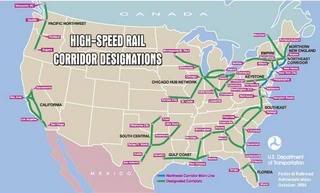 Last week I
Last week I 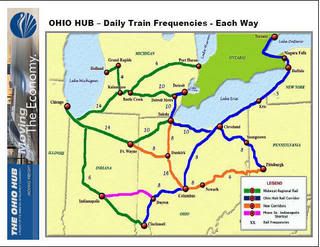 For my part, as a Buckeye, where I want the $375m 3C Quickstart Design Money to go is to the Wolverine Line in Michigan. Michigan applied for
For my part, as a Buckeye, where I want the $375m 3C Quickstart Design Money to go is to the Wolverine Line in Michigan. Michigan applied for  As for the Wisconsin $810m (it might only be $740m, if the Governor is clever enough to figure out a way to hold onto the $70m to be spent on the Hiawatha corridor), I'd say start by putting it at the other end of the Empire Builder line, in the Pacific Northwest. Washington
As for the Wisconsin $810m (it might only be $740m, if the Governor is clever enough to figure out a way to hold onto the $70m to be spent on the Hiawatha corridor), I'd say start by putting it at the other end of the Empire Builder line, in the Pacific Northwest. Washington  One of the consequences of the 2010 General Elections was the election of RepubliCorp Governors in Ohio and Wisconsin who politically neutralized the success of sitting Democratic state administrations in landing $400m and $800m High Speed Rail funding by demonizing the High Speed projects that were funded.
One of the consequences of the 2010 General Elections was the election of RepubliCorp Governors in Ohio and Wisconsin who politically neutralized the success of sitting Democratic state administrations in landing $400m and $800m High Speed Rail funding by demonizing the High Speed projects that were funded.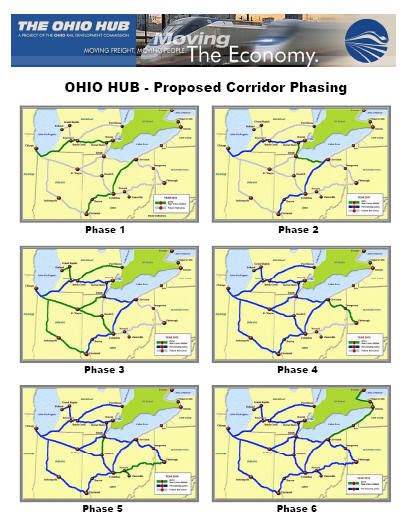 Ah, so what about the 3C Quickstart? Why did the State Legislature have to promise to provide up to $12m in operating surpluses over the next 20 years in order for the USDoT to give Ohio $400m to build the 3C Quickstart?
Ah, so what about the 3C Quickstart? Why did the State Legislature have to promise to provide up to $12m in operating surpluses over the next 20 years in order for the USDoT to give Ohio $400m to build the 3C Quickstart?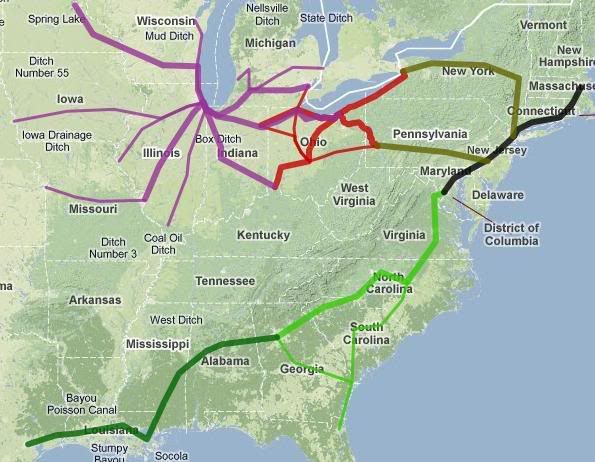 The 3C rail corridor is very much a corridor of two halves. As [http://www.thetransportpolitic.com/2010/11/04/understanding-representative-john-micas-transportation-agenda/#comment-102003 Drewski comments at The Transport Politic]:
The 3C rail corridor is very much a corridor of two halves. As [http://www.thetransportpolitic.com/2010/11/04/understanding-representative-john-micas-transportation-agenda/#comment-102003 Drewski comments at The Transport Politic]:  So, what is a Progressive Populist to make of an election when with a 14% real unemployment rate (see below), where the House changes parties?
So, what is a Progressive Populist to make of an election when with a 14% real unemployment rate (see below), where the House changes parties? Y'all probably know that I am not now nor have I ever been President Obama's biggest fan. In terms of economics, I view him as a Hedge Fund Democrat, or what is known in the rest of the English speaking world as a "neoliberal" (remembering back to 1800's Liberalism, not the mid-1950's Social Liberalism of the US).
Y'all probably know that I am not now nor have I ever been President Obama's biggest fan. In terms of economics, I view him as a Hedge Fund Democrat, or what is known in the rest of the English speaking world as a "neoliberal" (remembering back to 1800's Liberalism, not the mid-1950's Social Liberalism of the US).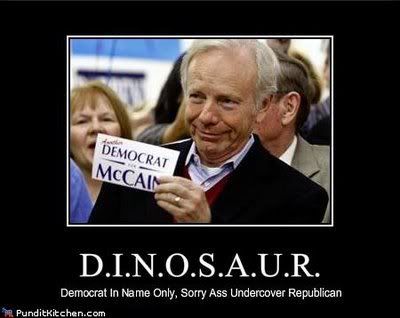 Not today of course. We can take our time to start. 9 November 2010 is soon enough.
Not today of course. We can take our time to start. 9 November 2010 is soon enough.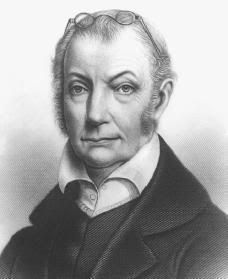 Best is to eliminate it. Just ax it. But with 50 votes plus Biden to break a tie, the votes are not likely to be there.
Best is to eliminate it. Just ax it. But with 50 votes plus Biden to break a tie, the votes are not likely to be there.
